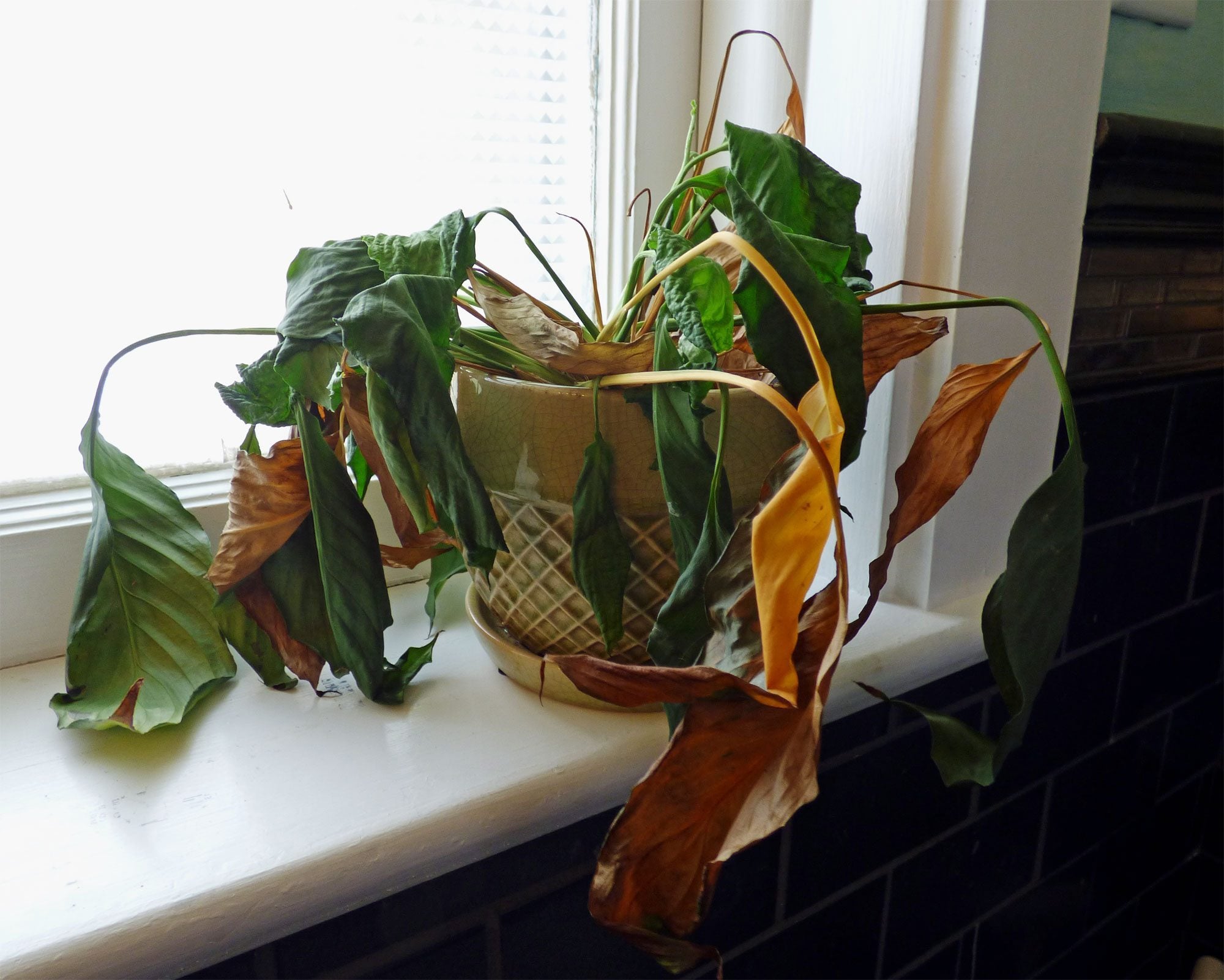Sudden Plant Death: Reasons A Houseplant Is Turning Brown And Dying


Sometimes a healthy-looking plant can decline and die in a matter of a few days, even when there are no apparent signs of trouble. Although it may be too late for your plant, investigating to determine the reason for sudden plant death may save time and money in the future.
Why a Plant May Suddenly Die
There are a number of factors that can lead to the sudden dying of plants. Below are the most common.
Improper Watering
Improper watering is often the reason for sudden dying of plants. If you forgot to water for a few days, it's possible that the roots dried up. However, the opposite is more likely, as too much water is often to blame for dying container plants. Root rot, a result of wet, poorly drained soil, can be occurring under the surface of the soil, even if the plant looks healthy. The problem is easy to see if you remove the dead plant from the pot. While healthy roots are firm and pliable, rotted roots are mushy, with a seaweed-like appearance. Don't be overly ambitious with the watering can when you replace the plant. Almost all plants are healthiest if the soil is allowed to dry between watering. Water the plant deeply until it drips through the drainage hole, then let the pot drain completely before returning it to the drainage saucer. Never let the pot stand in water. Water again only if the top of the soil feels dry to the touch. Be sure the plant is in a well-drained potting mix - not garden soil. Most importantly, never place a plant in a pot without a drainage hole. Improper drainage is a sure-fire invitation for dying container plants.
Pests
If you determine watering issues aren't to blame for sudden plant death, look closely for signs of insects. Some common pests are difficult to spot. For example, mealybugs are indicated by cottony masses, usually on the joints or undersides of leaves. Spider mites are too tiny to see with the bare eye, but you may notice the fine webbing they leave on the leaves. Scale is a tiny bug with a waxy outer covering.
Chemicals
Although it is unlikely, be sure your indoor plant hasn't come in contact with herbicide spray or other toxic substances. Additionally, be sure the leaves haven't been splashed with fertilizer or other chemicals.
Other Reasons a Houseplant is Turning Brown
If your houseplant is alive but the leaves are turning brown, the above reasons may apply. Additional reasons for browning of leaves include:
- Too much (or too little) sunlight
- Fungal diseases
- Over-fertilizing
- Lack of humidity
Sign up for the Gardening Know How newsletter today and receive a free copy of our e-book "How to Grow Delicious Tomatoes".

A Credentialed Garden Writer, Mary H. Dyer was with Gardening Know How in the very beginning, publishing articles as early as 2007.